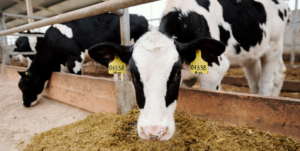Demarcation of indigenous lands: see how our solutions help identify overlapping territories
25 de November de 2021
Tempo de Leitura: 6 minutos
The “Marco Temporal” (temporal milestone) trial by the Brazilian Supreme Court gained great publicity and increased interest regarding the Indigenous Lands demarcation issue in Brazil.
However, this topic is not big news for companies that are related to agribusiness, since the problem of overlapping Environmental Rural Registries and territories owned by native peoples is a topic that needs to be constantly observed by those who buy, sell, secure, and finance rural production. In this new post, we gather important information about the demarcation of indigenous areas and address the impacts that overlapping and misuse of these territories can have on companies that have a relationship with them. In addition to showing how Agrotools’ digital solutions help financial institutions, insurance companies, meatpackers, supermarket chains, and other players to identify them in their production chain. Enjoy the reading!
What are indigenous lands?
Under article 231 of the 1988 Constitution it is acknowledged that Indigenous Lands (ILs) are those inhabited by native peoples “on a permanent basis, used for their productive activities, essential for the preservation of environmental resources necessary for their well-being and necessary for their physical and cultural reproduction according to their uses, customs, and traditions”.
The Constitution also states that the areas inhabited by traditional peoples are assets of the Union, intended for indigenous people’s permanent possession and that they have the right to the exclusive use of the soil, rivers, and lakes existing on those lands.
According to the Instituto Socioambiental (ISA), there currently are 705 indigenous lands in different stages of demarcation and they are home to 253 ethnic groups in Brazil. Indigenous Lands total around 1.173 million square kilometers and are equivalent to 13.8% of the national territory. Most of them, more than 400, are located in the Legal Amazon..
How demarcation of indigenous lands is carried out
“The Indian Statute” (Law No. 6001/73)o defined that it was the Union’s responsibility to demarcate the Indigenous Lands. And Decree 1775/1996, of the Ministry of Justice, established that the process of demarcating these territories must be conducted by the Executive Power, within the scope of the official indigenous affairs agency, Funai (National Indigenous Foundation).
The process of demarcating Indigenous Lands consists of several stages, which define the status of these territories from the beginning of the demarcation to its completion. Indigenous Lands can enter the following statuses:
Lands under study
This is the stage in which anthropological, historical, land, cartographic and environmental studies are carried out to support the delimitation of the indigenous land.
Delimited
Indigenous Lands with this status are those that had their studies published in the Official Report by Funai. At this stage, the studies are analyzed by the Ministry of Justice for the issuance of a Declaratory Order of Indigenous Traditional Possession.
Declared
This stage is considered the landmark of regularization. In it, the Minister of Justice declares the territory is of exclusive use of indigenous people and the demarcation of the lands is authorized.
Approved
At this stage, the Indigenous Lands have their limits approved by the President of the Republic.
Regularized
Indigenous Lands with this status are fully regularized, with a registry in the name of the Union and in the Union Heritage Service.
Indigenous Reserves versus Indigenous Lands
It is worth clarifying that Indigenous Lands and Indigenous Reserves are not synonymous. Reserves are lands donated by third parties, acquired or expropriated by the Union. As they are not traditional properties, they do not undergo demarcation procedures.
How the demarcation of Indigenous Lands contributes to the preservation of the environment
Satellite images of areas with Indigenous Land demarcation show that these territories represent environmental preservation areas. Studies also show that demarcating these territories greatly contributes to fighting deforestation and, consequently, controlling the climate crisis that threatens the Earth. Data from the Rights and Resources Initiative (RRI), Woods Hole Research Center (WHRC), and the World Resources Institute (WRI) indicate that all around the globe, lands managed by traditional communities hold about 24% of the carbon on the surface of the planet.
The Climate Benefits, Tenure Costs of 2016, a WRI study, reveals that in Brazil, Indigenous Lands have the potential to avoid the emission of 31.8 million tons of CO2 on an annual basis. This is equivalent to taking more than 6.5 million cars off the roads for a year.
Such researches also point out that ecosystem services provided by forest conservation in indigenous territories, such as the water cycle or the possible tourist activities, would amount to resources between US$ 500 million and US$ 1 billion for Brazil in 20 years.
What are the problems caused by the overlapping of rural properties with Indigenous Lands?
According to a survey by the De Olho Nos Ruralistas, an agribusiness observatory in Brazil, there are almost 300 indigenous lands improperly registered in the name of individuals or legal entities in Brazil. A study by the Instituto Socioambiental (ISA) shows that the number of irregular rural properties registered in the Environmental Rural Registry (CAR) grew by 56% between 2019 and 2020. Also, forest destruction grew by 63% in the lands registered in the CAR within Indigenous Lands and Conservation Units between 2018 and 2020.
In addition to alerting to the importance of demarcation, inspection, and protection of Indigenous Lands, these numbers should serve as a warning to players that relate to rural areas, since buying, selling, financing, or insuring properties that invade Indigenous Lands is illegal and may pose several problems for companies that do business with these territories.
Agrotools’ solutions to identify overlapping rural properties and Indigenous Lands
Aware that this is an illegal practice, many companies have already been concerned about the negative consequences that the commercial relationship with Indigenous Lands can have on businesses. Therefore, they prohibit the relationship with such territories in their internal policies, regardless of the status of Indigenous Land. In addition, with the growing relevance of the ESG agenda, it is expected that this behavior is followed by all companies that do not want to have legal, financial, and reputational damages.
To support companies that want to protect their supply chains from the inconvenience caused by disrespecting the demarcation of Indigenous Lands, Agrotools has developed technological tools that make it possible to identify overlapping rural properties and Indigenous Lands and to receive full details about the situation of these territories with just a few clicks.
Our Enterprise solutions, individual analysis tools and APIs cross the information from our own database with that of public databases to deliver to your company much more than a report, but insights that:
- ensure compliance with environmental legislation
- mitigate socio-environmental risks in the relationship with rural territories
- support the company’s ESG management
- assist in strategic decision-making
Access AT Market, our marketplace, and learn about Socioenvironmental Analysis Pixel and the Indigenous Lands examination Function, which are technological solutions specially created to detect the overlap of Indigenous Lands and properties of interest to players that relate to agribusiness.







